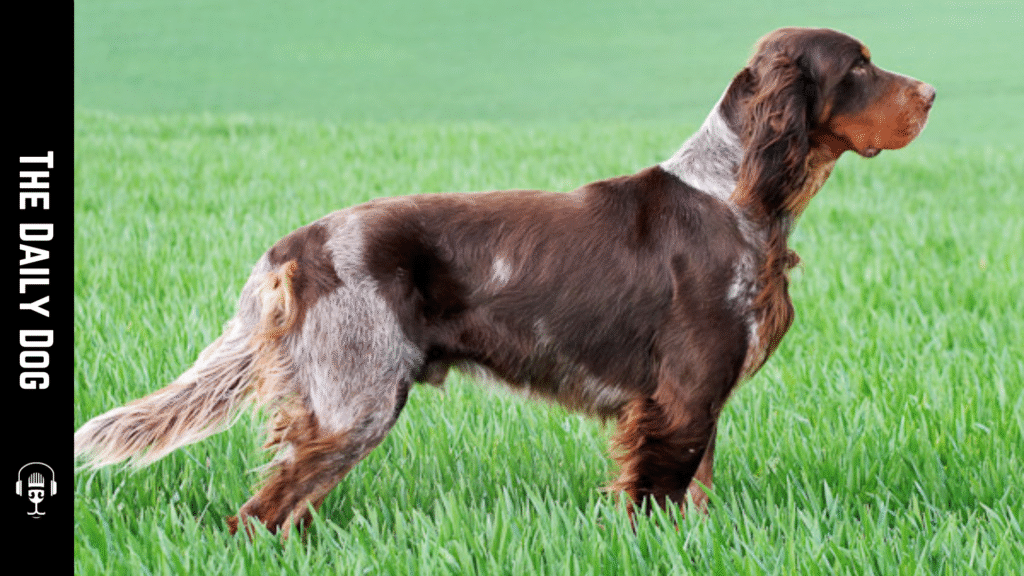The Picardy Spaniel, not to be confused with the French Spaniel, is a storied breed that embodies the rugged charm and practical versatility of the French countryside. Known for its gentle disposition, keen sense of smell, and reliable work ethic, the Picardy Spaniel has a history rooted in the rugged hedgerows and wide-open plains of northern France. This breed, sometimes affectionately called the Tchiot Picard in its ancestral regions, traces its lineage to early pointers and spaniel-like dogs that were valued by hunters for their stamina, bird sense, and willingness to work in challenging terrains. Today, the Picardy Spaniel remains a cherished companion for active families and a dependable partner for outdoorsmen and women who prize a dog with endurance, trainability, and a steady temperament.
A Storied Heritage and Distinct Identity
The Picardy Spaniel is often linked to the Picardy region, where fanciers bred a dog that could endure long days afield while maintaining a steady, amiable demeanor at home. This breed stands apart from the French Spaniel, which is a separate line with its own set of characteristics and hunting traditions. The Picardy Spaniel’s unique blend of pointer-like field instincts and spaniel-like affection creates a versatile pointer that excels in upland game work, tracking, and steady companionship on family outings. Its appearance, gait, and coat speak to practical French hunting heritage: a robust, medium-sized frame, expressive eyes, and a coat that provides coverage without excessive maintenance.
Physical characteristics and temperament
Typically medium to large in size, the Picardy Spaniel presents a balanced, athletic silhouette that embodies stamina. Its coat is usually short to medium in length, with a color palette that includes liver or fawn tones and often a white chest or chest markings. This coloration helps the dog blend into rural cover while remaining aesthetically pleasing. The breed’s head carries a thoughtful, intelligent expression, complemented by alert ears and a tail that often shows a lively, responsive wag when the dog is engaged in activity.
Temperament is one of the Picardy Spaniel’s strongest selling points. These dogs tend to be even-tempered, patient, and deeply loyal to their families. They often form strong bonds with their human companions and adapt well to households that provide steady routines, regular exercise, and mental stimulation. In terms of energy, the Picardy Spaniel is enthusiastic about outdoor pursuits but can settle into a calm, settled state indoors. This balance makes the breed suitable for active individuals and families who want a dog that enjoys fieldwork yet remains a affectionate home partner.
Exercise, training, and intelligence
The Picardy Spaniel thrives on structured exercise and purposeful training. Its hunting heritage translates into a dog with a strong desire to work and please. Daily activity is essential to keep the breed physically fit and mentally engaged. Long walks, hiking, or runs paired with scenting games and built-in problem-solving tasks help prevent boredom and behavioral issues. Training should emphasize patience, consistency, and positive reinforcement. Early socialization is important to ensure the dog remains comfortable around strangers, children, and other dogs.
This breed responds well to training methods that acknowledge its autonomous streak while guiding it toward desired behaviors. Because Picardy Spaniels possess a keen nose and a strong drive to explore scents, incorporating scent-based games and field tasks can be especially rewarding. Proper training not only reinforces obedience but also channels the dog’s natural energy into productive activities, strengthening the bond between dog and owner. With regular practice, many Picardy Spaniels become reliable companions on hunts, in obedience work, and in family settings.
Care, grooming, and health considerations
Grooming a Picardy Spaniel is typically straightforward. The coat requires regular brushing to minimize shedding and remove debris from outdoor adventures. Occasional bathing is sufficient, and daily care should focus on ear cleaning and dental hygiene, as with most breeds. Regular nail trims and routine veterinary checkups help maintain overall health.
Like all breeds, the Picardy Spaniel has health considerations worth noting. Prospective owners should be attentive to potential orthopedic concerns, ear infections, and eye health, especially given the breed’s active lifestyle. A well-balanced diet matched to the dog’s age, weight, and activity level supports energy, coat quality, and general well-being. Routine vaccinations, parasite prevention, and periodic health screenings are important elements of responsible ownership. Before bringing a Picardy Spaniel home, discuss breed-specific risks with a veterinarian to tailor a proactive care plan.
Living with a Picardy Spaniel
This breed tends to flourish in homes that value routine, outdoor time, and companionship. Families with an active lifestyle will appreciate the Picardy Spaniel’s enthusiasm for exploration and sport. The dog’s affectionate and patient nature makes it an excellent partner for children when properly socialized and supervised. However, as with any dog of working heritage, ongoing training and mental engagement are essential to prevent restlessness or unwanted behaviors indoors. A well-mixed daily schedule that includes physical exercise, mental challenges, and time for quiet cuddling creates a harmonious home environment for both dog and owner.
Choosing the right Picardy Spaniel for you
When considering a Picardy Spaniel, prospective owners should assess their living situation, activity level, and commitment to ongoing training and care. The breed’s energy and hunting-inclined instincts require an owner who is willing to invest time in daily exercise, scent work, and structured training sessions. A suitable home for a Picardy Spaniel pairs a fenced yard or regular access to outdoor spaces with a household that can provide consistent guidance and affection. Potential owners should also consider riding the wave of a dog’s enthusiasm for outdoor pursuits while balancing it with a calm, comfortable home life.
The Picardy Spaniel versus the French Spaniel: understanding the distinction
It is important to distinguish the Picardy Spaniel from the French Spaniel, a separate breed with its own characteristics and hunting traditions. While both breeds share a French origin and a heritage in working roles, they diverge in appearance, temperament, and historical development. The Picardy Spaniel tends to be more frequently associated with pointing and fieldwork, reflecting its upland game emphasis. The French Spaniel may exhibit different coat textures, coloration patterns, and instinctive drives shaped by its own regional breeding history. Recognizing these differences helps prospective owners align expectations with the realities of each breed’s behaviors, training needs, and lifestyle compatibility.
The role of the Picardy Spaniel in modern companionship
In contemporary settings, the Picardy Spaniel serves as a versatile partner for active individuals and families. Its combination of athleticism, intelligence, and affection translates into a dog that excels in varied roles, from a reliable field partner to a devoted family companion. The breed’s steady temperament makes it suitable for households that value a calm, loyal presence alongside the joys of outdoor activity. This adaptability is particularly appealing to dog lovers who want a breed capable of meaningful work and rich companionship.
Concluding thoughts: embracing a Picardy Spaniel
For those drawn to the French countryside’s traditions and who seek a dog with a dependable work ethic and a warm, engaging personality, the Picardy Spaniel offers a compelling choice. Its lineage, athletic build, and balanced temperament create a dog that can thrive in hands-on households that appreciate both outdoor activity and quiet moments at home. As with any breed, successful ownership hinges on consistent training, ample exercise, and attentive care. By understanding the Picardy Spaniel’s unique identity and needs, distinct from the French Spaniel, owners can cultivate a rewarding, lifelong bond with a dog that embodies the spirit of its French hunting heritage while adapting gracefully to modern life.










